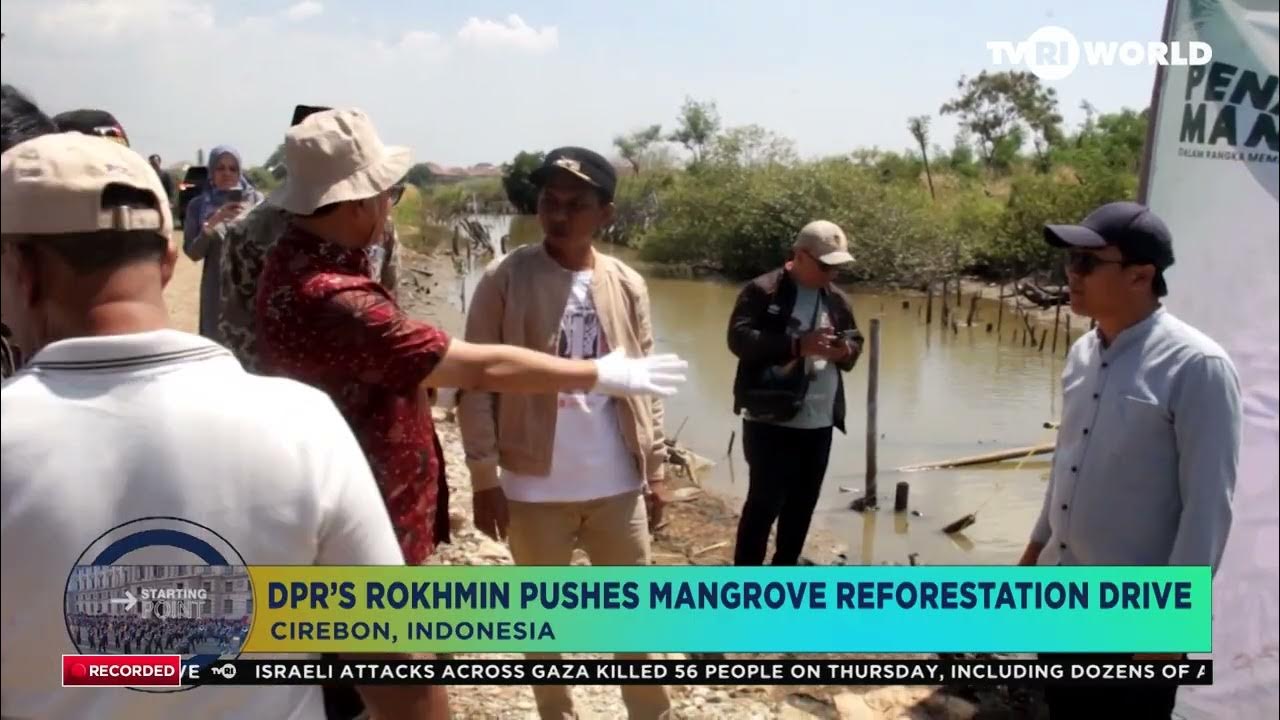Mangroves: how they help the ocean
Summary
TLDRA coastal community in Gazi Bay, Kenya, is pioneering mangrove conservation through the Mikoko Pamoja project, which protects these vital forests while selling carbon credits. Mangroves, thriving in saltwater, are essential to marine ecosystems and climate change mitigation by sequestering large amounts of carbon. The project combines scientific research and community involvement, providing income and funding for local needs while safeguarding the environment. Despite challenges, this initiative serves as a model for sustainable conservation, with similar efforts already spreading to other regions like Madagascar.
Takeaways
- 🌊 The ocean is at a breaking point, and radical steps are needed to protect marine ecosystems.
- 🌱 Mangroves are crucial to tropical oceanic ecosystems but are rapidly disappearing due to human activity.
- 🌍 A community in Gazi Bay, Kenya, is pioneering mangrove conservation through innovative methods like carbon storage.
- 🌳 Mangroves are unique as they thrive in salt water and act as nurseries for marine life, supporting biodiversity.
- 🔄 Mangrove forests store more carbon than terrestrial forests, making them vital in the fight against climate change.
- 💡 Gazi Bay’s 'Mikoko Pamoja' project is the world’s first community-based mangrove conservation funded by carbon credits.
- 💰 The sale of carbon credits has earned the Gazi Bay community over $60,000, benefiting local clinics, schools, and clean water sources.
- 🦀 Mangroves not only store carbon but filter water, improving marine biodiversity, including supporting fisheries.
- 🌳 Critics argue that carbon offsetting is not a perfect solution, but it is part of a larger effort to address climate change.
- 🏞️ The success of the Gazi Bay project has inspired other areas, including Madagascar, to replicate the model for ecosystem protection.
Q & A
What is the significance of mangroves in oceanic ecosystems?
-Mangroves are critical for tropical oceanic ecosystems because they provide nursery habitats for marine species, help clean the ocean by filtering dirty water, and serve as natural carbon stores, playing a key role in combating climate change.
How do mangroves contribute to carbon sequestration?
-Mangroves absorb carbon dioxide and store it within their leaves, branches, and roots. Unlike terrestrial forests, mangroves trap carbon-rich material in their waterlogged soil, where it remains securely stored for millennia, as long as the forests remain intact.
Why are mangrove forests disappearing, and what are the main threats?
-Mangroves are being lost due to human activities such as shrimp farming, removal of trees for palm oil plantations, coastal developments, and in Africa, the extraction of fuelwood and timber. If current rates of loss continue, all mangroves could disappear within 100 years.
What is the Mikoko Pamoja project, and how does it work?
-Mikoko Pamoja is a community-based mangrove conservation project in Gazi Bay, Kenya. It is funded by the sale of carbon credits, which are generated by the extra carbon storage and sequestration the project ensures. The funds are used for community development, such as clean water sources, clinic supplies, and forest rangers.
How does the sale of carbon credits help local communities in Gazi Bay?
-The sale of carbon credits has earned the local communities over $60,000 in the past five years, which has been invested in clean water sources, local clinics, schools, and forest conservation efforts. This creates financial incentives for the community to protect rather than exploit the mangroves.
What role do mangroves play in the fishing industry in Gazi Bay?
-Mangroves provide a habitat for fish to lay their eggs and breed. Fishermen in Gazi Bay have observed that fishing near mangroves often results in a bigger catch, showing how mangrove conservation positively impacts their livelihoods.
Why is carbon offsetting controversial?
-Carbon offsetting is controversial because it can be difficult to accurately calculate how much carbon is being sequestered, and some critics argue that it may serve as an excuse for inaction on climate change, rather than driving deeper, systemic changes.
How does the community in Gazi Bay benefit from protecting mangroves instead of cutting them down?
-The community benefits more from keeping the mangroves alive because of the income generated by selling carbon credits. This helps fund essential services like clean water and healthcare while ensuring the forest’s long-term survival.
What are the challenges of calculating carbon sequestration in mangrove projects?
-Accurately calculating carbon sequestration is complex because it involves numerous variables, such as forest density, soil composition, and environmental conditions. Variations in these factors make it challenging to ensure precise carbon accounting.
What future potential does the Mikoko Pamoja model have for global mangrove conservation?
-The Mikoko Pamoja model has potential for global replication, with nearby villages and even countries like Madagascar starting similar projects. It offers a sustainable approach to mangrove conservation that could be expanded to protect ecosystems worldwide.
Outlines

Cette section est réservée aux utilisateurs payants. Améliorez votre compte pour accéder à cette section.
Améliorer maintenantMindmap

Cette section est réservée aux utilisateurs payants. Améliorez votre compte pour accéder à cette section.
Améliorer maintenantKeywords

Cette section est réservée aux utilisateurs payants. Améliorez votre compte pour accéder à cette section.
Améliorer maintenantHighlights

Cette section est réservée aux utilisateurs payants. Améliorez votre compte pour accéder à cette section.
Améliorer maintenantTranscripts

Cette section est réservée aux utilisateurs payants. Améliorez votre compte pour accéder à cette section.
Améliorer maintenantVoir Plus de Vidéos Connexes

Manfaat bakau atau hutan mangrove bagi semesta alam

Who Actually Profits From Saving the Planet?

#DarlingInfo - MANGROVE DAN SEJUTA MANFAATNYA - SAVE MANGROVE, SAVE THE WORLD!

Berkenalan dengan Hutan Mangrove, Pelindung Kawasan Pesisir

BENTUK LAHAN ASAL ORGANIK

DPR’S ROKHMIN PUSHES MANGROVE REFORESTATION DRIVE
5.0 / 5 (0 votes)
